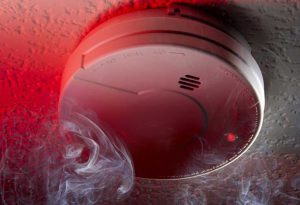Living in Australia has its danger the animals, the bugs and spiders but also the heat. This is why ensuring that your home or property is protected through smoke alarms is so important. There has been a recent change in smoke alarm laws for 2017.
This is mainly due to the Slacks Creek house fire that claimed the lives of 11 people. The changes to legislation are outlined below or can be found by following this link https://www.commerce.wa.gov.au/publications/smoke-alarm-laws
What properties need a smoke alarm?
The Building Regulations 2012 requires the owner of a property to have compliant smoke alarms installed prior to the transfer or sale of ownership, if a property is rented or made available for rent and where a property is available for hire.
How do I ensure a smoke alarm is compliant?
- The smoke alarms must be in accordance with the building code of Australia (BCA)
- They are no more than 10 years old
- Are in working order
- Are hardwired into the mains power of the property
All alarms must be interconnected except for properties that were approved for construction prior to May 1st, 2015.
What types of properties need to have compliant smoke alarms?
Class 1A- A single dwelling
- Detached house
- Row of houses
- Duplexes
- Town houses
- Terrace house/ Villa units
Class 1B- Multiple dwellings
- Boarding houses
- Guest houses
- Hostels
- Tourist parks
- Farmstays
- Holiday resorts
- Cabins in caravan parks
Class 2- Units (two or more units)
- Apartments
- Flats
Class 4- A residential unit in a non residential building
- Caretaker’s residence
Where should smoke alarms be located?
Smoke alarms should not be located near cooking appliances and bathrooms as it is more likely to cause a false alarm. In most properties alarms should be placed either on the ceiling or as close to the ceiling as possible and in the path of travel that people will most likely take to evacuate the building.
For class 1A properties alarms must be placed on all levels, in hallways leading to bedrooms and in locations of the bedrooms and other areas (even if on the same level).
For class 1B properties alarms must be installed in every bedroom, all hallways or corridors that lead to bedrooms and on every storey.
For class 2 and 4 properties are very similar to class 1A properties. Further information on locations for alarms can be found at http://www.abcb.gov.au/ and see below for diagrams.
Can I still used battery powered smoke alarms?
With the new legislation there are a few exceptions that allow battery powered alarms to be installed. Generally when installing these units you will need local government approval. Again exceptions to this are if the mains power is not connected to the property or if there is no space in the property to run the necessary wiring for hard wired smoke alarms (for example properties with concrete ceilings).
What type of smoke alarms am I allowed to install?
Apart from battery operated and hardwired alarms there are two types of hard wired alarms that are approved for install, they are ionisation and photoelectric alarms.
Ionisation alarms use a small amount of radioactive material to create an electrical current, when there is smoke around the alarm it interferes with the current setting off the alarm.
Photoelectric alarms work in a similar way but uses a light source instead of radioactive material and when that light source is interrupted the alarm sounds.
Out of these two The department of Fire and Emergency Services recommend the use of photoelectric alarms.
Who can install smoke alarms?
All hard wired alarms must be installed or uninstalled by a licensed electrician and only approved battery operated alarms can be installed without a professional.
How to maintain smoke alarms?
To ensure alarms work they should be tested and maintained regularly. We recommend that you:
- Test each alarm once per month; to learn how to test your alarm click here
- Check the alarm for any build-up of dust and cobwebs and clean with a vacuum at least every six months
- Use surface insect spray around the alarm to prevent insects nesting inside
- Replace batteries annually
- Smoke alarms should never be painted

